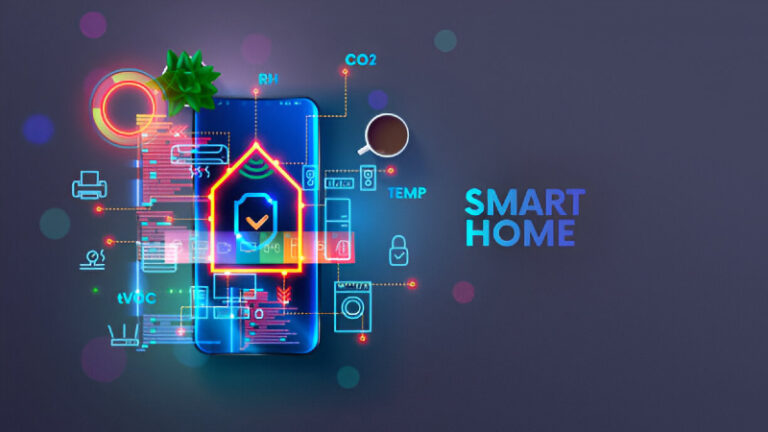The traditional house is out, and the intelligent living space is in. For a generation that’s always connected, always on the go, and always seeking efficiency, the appeal of a smart home, young life blend isn’t just about convenience—it’s about crafting an environment that truly understands and supports their dynamic lifestyle. This isn’t your parents’ smart home; it’s a personalized hub designed for creators, gamers, students, and socializers.
While the core benefits of smart homes—enhanced convenience, security, and energy efficiency—are well-known, for young individuals, the integration of smart tech offers something deeper: control, customization, and a seamless extension of their digital world into their physical space. It’s about leveraging technology to free up time, reduce mental load, and amplify personal expression, making the home a truly responsive partner in a fast-paced existence.
A Personal Smart Home Strategy
Many hear “smart home” and think of voice assistants playing music or adjusting lights. While those features are essential, for young adults, a smart home, young life setup goes much further. It’s about strategic integration that solves unique pain points and enhances specific passions.
Consider these key areas where intelligent home solutions truly shine for a younger demographic:
The Ultimate Productivity Hack
Time is currency for today’s youth, whether it’s for studies, side hustles, or social engagements. Smart home tech helps reclaim those precious minutes.
- Automated Routines: Imagine your alarm syncing with smart blinds that gradually open, and your smart coffee maker starting automatically. No more fumbling in the dark; just a smooth, prepared start to your day.
- “Study Mode” Activation: A single voice command or tap can dim the lights, silence notifications on connected devices, and even activate a white noise machine for laser-focused concentration.
- Laundry on Autopilot: Smart washing machines and dryers can notify you when cycles are done, or even schedule loads during off-peak hours, saving both time and energy.
These aren’t just gadgets; they’re digital assistants managing the mundane, allowing more headspace for what truly matters. According to Statista, convenience is a leading driver for smart home adoption, and for young, busy individuals, this convenience directly translates into time freedom.
Security That Just Gets It
Safety is paramount, but for many young people, constant vigilance can be draining. Smart security systems offer peace of mind without the hassle.
- Discreet Monitoring: Smart doorbells and compact security cameras provide real-time alerts to your smartphone, letting you know when a package arrives or who’s at the door, even if you’re out.
- Smart Locks, No More Keys: Forget worrying about lost keys or lending them out. Smart locks allow remote access for trusted friends or family, and you can instantly revoke access as needed.
- AI-Powered Alerts: Modern systems leverage AI to differentiate between a pet and an intruder, reducing false alarms and ensuring you only get notifications that truly matter. This proactive approach to security is a major draw, with surveys showing up to 80% of smart home device owners feeling more secure.
| Smart Security Feature | Young Life Benefit |
| Video Doorbells | Package delivery alerts, screening visitors when not home. |
| Smart Locks | Keyless entry, temporary access for friends, peace of mind for roommates. |
| AI Motion Sensors | Reduced false alarms, targeted notifications. |
| Connected Smoke/CO | Remote alerts to phone, even if you’re away. |
The Eco-Conscious Connection
Younger generations are inherently more environmentally aware. Smart homes align perfectly with this ethos by promoting genuine sustainability.
- Optimized Energy Use: Smart thermostats learn your habits and adjust heating/cooling, cutting energy waste without you lifting a finger. This can lead to significant savings—up to 15% on energy bills, as noted by the U.S. Department of Energy.
- Smart Lighting Schedules: Lights turn off automatically when you leave a room or can be set to follow natural daylight cycles, preventing unnecessary electricity consumption.
- Real-time Consumption Insights: Apps provide detailed breakdowns of energy use, empowering informed decisions and fostering a sense of responsibility. It’s about leveraging technology to actively contribute to a healthier planet.
The Personalized Sanctuary
A living space for a young individual isn’t just four walls; it’s a reflection of their personality, a canvas for creativity, and a hub for their passions. Smart tech makes this personalization effortless.
- Dynamic Ambiance: Smart LED light strips and panels can sync with music, gaming, or movies, transforming a room into a vibrant, immersive experience for streaming, chilling, or entertaining.
- Custom Soundscapes: Multi-room audio systems allow different music in different zones, from a chill playlist in the bedroom to upbeat tunes in the living room, all controlled from a single device.
- Gaming Command Center: Integrate lighting, audio, and even smart desk height adjustments for the ultimate gaming setup, all triggered by a single voice command or macro.
- Health & Wellness Hub: Connect wearables, smart air purifiers, and even smart diffusers to create a personalized wellness environment that adapts to your needs, promoting better sleep and overall well-being.
The Future of Smart Home, Young Life
The trajectory for smart homes continues its upward climb. As IoT (Internet of Things) devices become even more interconnected and AI capabilities grow more sophisticated, these living spaces will become increasingly intuitive. Imagine homes that anticipate your needs based on calendar entries, dietary preferences, or even real-time stress levels.
The initial investment for a fully automated home can be significant, but starting small with individual smart devices under $100 (like a Google Nest Mini or a smart plug) is a common and effective entry point. The crucial aspect for young individuals is that smart homes aren’t just about luxurious gadgets; they are fundamental tools for managing a demanding, fast-paced world, offering both practicality and a canvas for personal expression.
Conclusion
Ultimately, the goal of a smart home, young life integration is to create a living environment that is as agile, adaptive, and unique as the individuals inhabiting it. It’s about designing a space that doesn’t just house you, but empowers you.
Frequently Asked Questions (FAQs)
What is a smart home ideal for young people?
A smart home for young individuals integrates technology to boost convenience, productivity, and personal expression, adapting to their fast-paced, connected lifestyles with features like automated routines and personalized entertainment.
Is building a smart home expensive for a young budget?
No, it doesn’t have to be. You can start affordably by investing in individual smart devices like smart plugs or speakers, gradually expanding your setup based on your needs and budget.
How can smart home technology help with productivity and time management?
Smart homes streamline daily tasks through automation, such as scheduling lighting, controlling appliances remotely, or setting up “focus modes” for study, freeing up time and reducing mental load.
What security benefits do smart homes offer for a young adult’s space?
Smart security provides peace of mind with features like video doorbells, smart locks, and AI-powered motion sensors that send real-time alerts to your phone, enhancing safety without constant vigilance.
Can smart homes be customized to reflect personal style and interests?
Absolutely. Smart lighting systems, multi-room audio, and integrated entertainment setups allow for dynamic ambiance and personalized experiences that reflect individual preferences, ideal for gaming, creating, or socializing.
Do smart homes help with sustainability or saving energy?
Yes, smart homes promote energy efficiency. Devices like smart thermostats and lighting systems learn habits to optimize energy use, reducing consumption and utility bills, aligning with eco-conscious living.
Are smart home devices difficult to set up or use?
Many modern smart devices are designed for easy setup and intuitive control, often managed through a single app or voice assistant, making them accessible even for those new to smart home technology.


